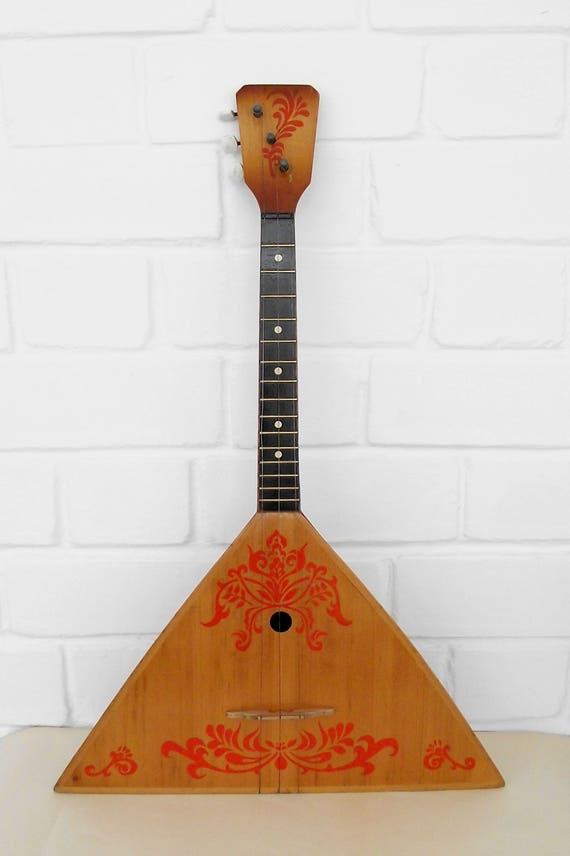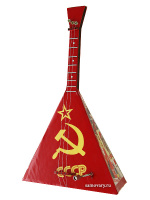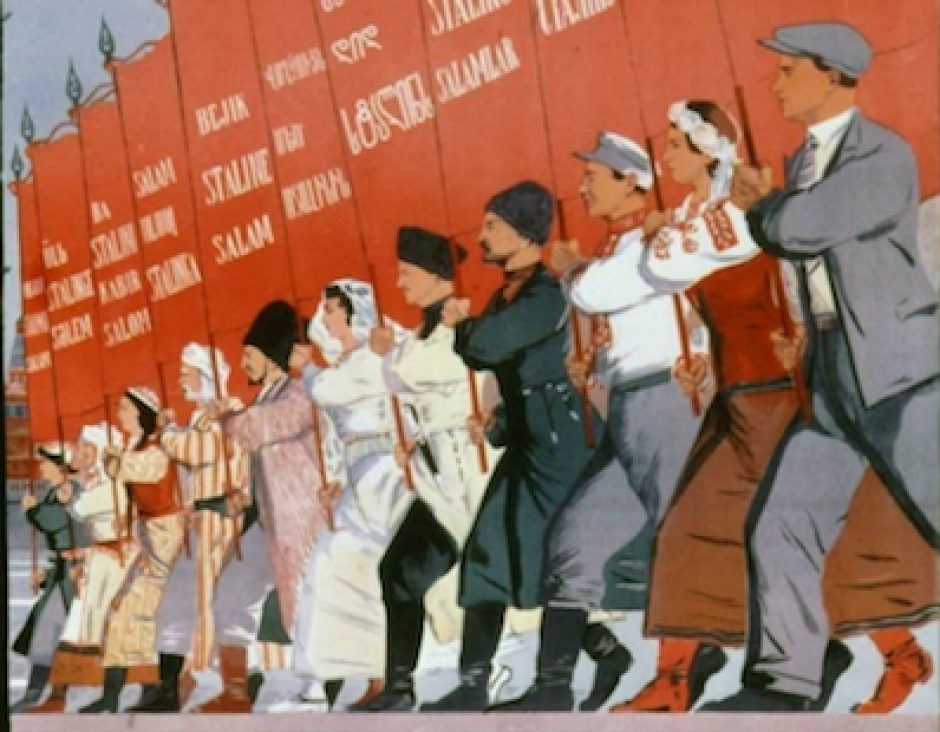“The arts belong to the people. They should penetrate through the length and breadth of all the working masses. They should embrace the feeling, thought and will of the masses and should uplift them” – Vladimir Lenin (Sokoloff 1931, 225)
Though the origins of the balalaika are somewhat murky, it has been a mainstay in Russian folk music since at least the 17th century, ebbing and flowing in popularity based on the political and cultural moods of the time; the first recorded mention of the balalaika documents a woman’s arrest in 1688 for playing the balalaika and singing in the street; the balalaika shows up in histories of Russia, Ukraine, and the Eastern Slavs (Kiszko 1995, 132–33). In the 17th century, there was a mass campaign to eradicate folk instruments by Russian Orthodoxy that included burning instruments at the banks of the Moscow river- it was quite unsuccessful. The balalaika’s popularity soared in the 18th and 19th century, as it became an established Russian musical mainstay in both high culture art music and low culture folk music. The balalaika transcended class in Tsarist Russia. In 1780 French composer Jean Benjamin de La Borde said, “One finds this instrument in all Russian houses, there is hardly a peasant who doesn’t know how to play one a little” (Kiszko 1995, 130). Though the Bolsheviks had a complicated relationship with the peasantry, its widespread prevalence across all social groups made the balalaika an ideal representation of a Russian culture for the people rather than the elites.
There are six sizes of balalaika: piccolo, prime, second, alto, bass, and contra-bass. The prime is the most prominent iteration. The version of the balalaika that was popular during the Soviet era has a triangular body with a rounded back, though earlier versions had pear-shaped bodies. The long neck holds three pegged strings that can be variously tuned to different keys depending on the will of the player. Rarely, the balalaika has six strings arranged in two groups of three. They are traditionally constructed out of one of two types of Russian wood, either the Russian Spruce or the Russian Fir though the material its made of is not a defining characteristic of the balalaika (Kiszko 1995, 141). Some historians and musicologists believe that it emerged variously from the long-necked lute, the guitar, the dombra, the tanbur, the padoura, the gudok, the domra, or the psaltery based on its long neck and strings while others believe that it emerged independent of any other instruments based on its unusual triangular shape (Kiszko 1995, 131).
By the time the Soviet era rolled around, playing the balalaika was highly encouraged and instruction was given at all levels of musical education (Kiszko 1995, 130). The balalaika was frequently featured in the orchestras of the Soviet period, used to add a distinct Russianness to the sound. The balalaika orchestras’ repertoires were quite diverse, comprised of “classical art works, the works of foreign composers and national songs and dances which enabled a continuing diversification of balalaika performance across repertoire” (Kiszko 1995, 146). Later, the repertoires expanded to included the folk music of non-Russian communist states, like the integration of Bulgarian folk music into the a program performed by the Osipov State Russian Folk Orchestra in 1989 (Kozinn 1989). Of the many balalaika orchestras popularized during the Soviet era, one of the most prominent was the Osipov State Russian Folk Orchestra, alternatively called the Osipov Balalaika Orchestra or the Osipov ‘s State’s People’s Orchestra. Established in 1888 by Vasily Andreyev as The Great Russian Orchestra, a balalaika septet, it was renamed The State Russian Folk Orchestra” in 1919 when it added in additional Russian folk instruments. In 1946 it was renamed after Nikolai Petrovich Osipov who conducted from 1940 until his death in 1945. It toured both the Soviet Union and the world, putting a friendly cultural face on the Soviet Union for a global audience (Kozinn 1989). Balalaika orchestras were frequently considered the masses’ alternative to the imported and bourgeoisie symphonic music played entirely on non-Russian instruments. In contrast, balalaika orchestras, which also tended to include domras, bayans, guslis, cruders, and other folk instruments, were essentially Russian in every way. Balalaika music was considered music of the people; for this reason balalaika orchestras were the most popular musical manifestation in the Soviet Union (Sokoloff 1931, 225). The balalaika was seen as utterly accessible, “the stratification of its role into folk instrumental music and professional art music made it the most democratically accessible instrument of its age and of subsequent time” (Kiszko 1995, 130). This made it the perfect instrument for the Soviets in their quest to construct cultural unity. The balalaika managed the impressive feat of popularization across all 272 million Soviet citizens, finding its way to even the most remote of the republics (Kiszko 1995, 130). The music of the balalaika and other traditional Russian instruments advanced the native culture of the Soviet state; it was the music of the proletariat.
The balalaika served propagandistic purposed both at home and abroad, creating a common cultural artifact for all Soviets while also emphasizing a Soviet art form that would be accessible to the people of other countries. In the preface for a 1966 book designed to teach Americans how to play the balalaika, a soviet author wrote, “The author hopes that this book will assist the American music lovers in mastering the technique of playing the poplar Soviet musical instrument balalaika in realization that the performance of Soviet music and of folk songs of the U.S.S.R. will unquestionably contribute to the improvement of understanding between our peoples” (Dorozhkin 1966, iii). The balalaika is a distinctly Russian cultural artifact with plenty of broad appeal and therefore a good tool for spreading Soviet culture.
Dorozhkin, Alexander. 1966. Elementary Method for the Balalaika. Alfred Music.
Kiszko, Martin. 1995. “The Balalaika – A Reappraisal.” The Galpin Society Journal 48: 130–55. https://doi.org/10.2307/842807.
Kozinn, Allan. 1989. “Reviews/Music; Balalaikas, Piccolo to Octobass.” The New York Times, January 27, 1989. http://www.nytimes.com/1989/01/27/arts/reviews-music-balalaikas-piccolo-to-octobass.html.
Sokoloff, Nikolai. 1931. “Symphonic Music in Soviet Russia.” The Musical Quarterly 17 (2): 219–26.
http://www.loc.gov/jukebox/recordings/detail/id/7830
https://www.youtube.com/watch?v=8yzoOe705aI (alternative recording in case the LOC one doesn’t work)
A recording of the Kirilloff Russian Balalaika Orchestra in New York City on May 2nd, 1921


Two Soviet Era balalaikas
